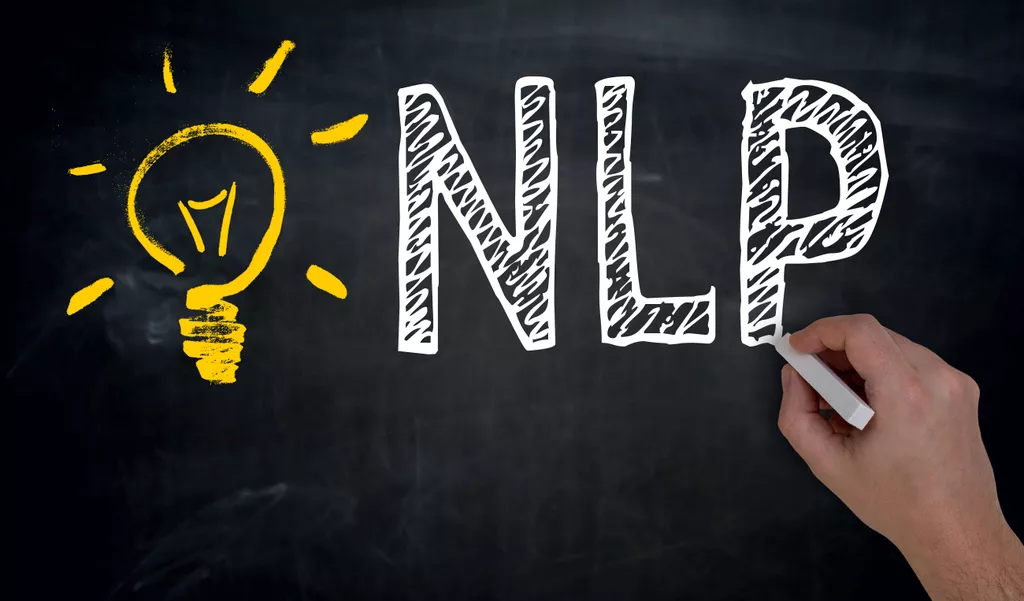I am trying to expand my knowledge in natural language processing and I recently came across concept of semantic representation of text. In short, semantics nlp analysis can streamline and boost successful business strategies for enterprises. All in all, semantic analysis enables chatbots to focus on user needs and address their queries in lesser time and lower cost.

“Investigating regular sense extensions based on intersective levin classes,” in 36th Annual Meeting of the Association for Computational Linguistics and 17th International Conference on Computational Linguistics, Volume 1 (Montreal, QC), 293–299. Using the support predicate links this class to deduce-97.2 and support-15.3 (She supported her argument with facts), while engage_in and utilize are widely used predicates throughout VerbNet. There have also been huge advancements in machine translation through the rise of recurrent neural networks, about which I also wrote a blog post. Noun phrases are one or more words that contain a noun and maybe some descriptors, verbs or adverbs. Below is a parse tree for the sentence “The thief robbed the apartment.” Included is a description of the three different information types conveyed by the sentence.
How Natural Language Processing will Affect the Future of SEO
Text classification allows companies to automatically tag incoming customer support tickets according to their topic, language, sentiment, or urgency. Then, based on these tags, they can instantly route tickets to the most appropriate pool of agents. Imagine you’ve just released a new product and want to detect your customers’ initial reactions. By tracking sentiment analysis, you can spot these negative comments right away and respond immediately.

Explore the merits and drawbacks of Hybrid, AutoML, and Deterministic methods in text classification. Understand which approach best suits your project and why ‘text classification’ is fundamental to AI. Finally, the relational category is a branch of its own for relational adjectives indicating a relationship with something. This is a clearly identified adjective category in contemporary grammar with quite different syntactic properties than other adjectives.
Semantic Role Labeling (SRL)
And with advanced deep learning algorithms, you’re able to chain together multiple natural language processing tasks, like sentiment analysis, keyword extraction, topic classification, intent detection, and more, to work simultaneously for super fine-grained results. One of the downstream NLP tasks in which VerbNet semantic representations have been used is tracking entity states at the sentence level (Clark et al., 2018; Kazeminejad et al., 2021). Entity state tracking is a subset of the greater machine reading comprehension task. The goal is to track the changes in states of entities within a paragraph (or larger unit of discourse). This change could be in location, internal state, or physical state of the mentioned entities. For instance, a Question Answering system could benefit from predicting that entity E has been DESTROYED or has MOVED to a new location at a certain point in the text, so it can update its state tracking model and would make correct inferences.
Zero-shot Learning in NLP: Understanding Languages Without … – CityLife
Zero-shot Learning in NLP: Understanding Languages Without ….
Posted: Sun, 28 May 2023 23:36:41 GMT [source]
The third example shows how the semantic information transmitted in
a case grammar can be represented as a predicate. For Example, Tagging Twitter mentions by sentiment to get a sense of how customers feel about your product and can identify unhappy customers in real-time. Usually, relationships involve two or more entities such as names of people, places, company names, etc. This article is part of an ongoing blog series on Natural Language Processing (NLP). It may be defined as the words having same spelling or same form but having different and unrelated meaning.
Online search engines
While their were some early successes with these systems such as SHRDLU these systems didn’t amount to much more than toy programs. For example, someone might write, “I’m going to the store to buy food.” The combination “to buy” is a collocation. Computers need to understand collocations to break down collocations and break down sentences. If a computer can’t understand collocations, it won’t be able to break down sentences to make them understand what the user is asking. The combination of NLP and Semantic Web technologies provide the capability of dealing with a mixture of structured and unstructured data that is simply not possible using traditional, relational tools.
Additionally predicate\sense disambiguation required to handle complex event co-reference. Collocations are an essential part of natural language processing because they provide clues to the meaning of a sentence. By understanding the relationship between words, algorithms can more accurately interpret the true meaning of the text.
Tasks Involved in Semantic Analysis
Conversely, a logical
form may have several equivalent syntactic representations. Semantic
analysis of natural language expressions and generation of their logical
forms is the subject of this chapter. Natural language processing is transforming the way we analyze and interact with language-based data by training machines to make sense of text and speech, and perform automated tasks like translation, metadialog.com summarization, classification, and extraction. They use highly trained algorithms that, not only search for related words, but for the intent of the searcher. Results often change on a daily basis, following trending queries and morphing right along with human language. They even learn to suggest topics and subjects related to your query that you may not have even realized you were interested in.
- Narayan-Chen, A., Graber, C., Das, M., Islam, M. R., Dan, S., Natarajan, S., et al. (2017).
- In this paper we make a survey that aims to draw the link between symbolic representations and distributed/distributional representations.
- Semantic analysis analyzes the grammatical format of sentences, including the arrangement of words, phrases, and clauses, to determine relationships between independent terms in a specific context.
- It unlocks an essential recipe to many products and applications, the scope of which is unknown but already broad.
- The ultimate goal of NLP is to help computers understand language as well as we do.
- Embeddings capture the lexical and semantic information of texts, and they can be obtained through bag-of-words approaches using the embeddings of constituent words or through pre-trained encoders.
By understanding the relationship between two or more words, a computer can better understand the sentence’s meaning. For instance, “strong tea” implies a very strong cup of tea, while “weak tea” implies a very weak cup of tea. By understanding the relationship between “strong” and “tea”, a computer can accurately interpret the sentence’s meaning. Both methods contextualize a given word that is being analyzed by using this notion of a sliding window, which is a fancy term that specifies the number of words to look at when performing a calculation basically.
Natural Language Processing Techniques for Understanding Text
Below are some resources to get a better understanding of the semantic parsing tools outlined above. While syntactic properties such as parts of speech help differentiate between the intended meaning of individual words, they are unable to capture the relationship between words. This post will focus on the development of formalisms for incorporating linguistic structure into NLP applications. The last posts in this series reviewed some of the recent milestones in neural NLP, methods for representing words as vectors and the progression of the architectures for making use of them, and the common pitfalls of state of the art neural NLP systems. GL Academy provides only a part of the learning content of our pg programs and CareerBoost is an initiative by GL Academy to help college students find entry level jobs.
- Natural language processing (NLP) algorithms are designed to identify and extract collocations from the text to understand the meaning of the text better.
- As we worked toward a better and more consistent distribution of predicates across classes, we found that new predicate additions increased the potential for expressiveness and connectivity between classes.
- Meaning-text theory is used as a theoretical linguistic framework to describe the meaning of concepts with other concepts.
- Early rule-based systems that depended on linguistic knowledge showed promise in highly constrained domains and tasks.
- The key to successful outcomes is for NLP engines to interpret language — whether we’re talking about spoken (voice search) or written language.
- However, if you experience barriers to learning in this course, do not hesitate to discuss them with me or the Office for Students with Disabilities.
One example of this work is QA-SRL which attempts to provide more understandable and dynamic parsing of the relations between natural language tokens. Additionally unlike AMR semantic dependency parses are SDP are aligned to sentence tokens meaning that they are easier to parse with with Neural NLP sequence models while still preserving semantic generalization. SRL aims to recover the verb predicate-argument structure of a sentence such as who did what to whom, when, why, where and how. While in recent years the advent of neural has contributed to state of the art results with regards to part of speech tagging and constituent parsing, they are still unable to effectively generalize different syntactic phrases that share semantic meaning. In practice creating rules for these systems was hard work and extremely brittle, since our understanding of language isn’t deterministic.
Semantic Structures
Narayan-Chen, A., Graber, C., Das, M., Islam, M. R., Dan, S., Natarajan, S., et al. (2017). “Towards problem solving agents that communicate and learn,” in Proceedings of the First Workshop on Language Grounding for Robotics (Vancouver, BC), 95–103. “Class-based construction of a verb lexicon,” in AAAI/IAAI (Austin, TX), 691–696. ” in Proceedings of the 58th Annual Meeting of the Association for Computational Linguistics (Association for Computational Linguistics), 7436–7453. • Predicates consistently used across classes and hierarchically related for flexible granularity.
What are the 3 kinds of semantics?
- Formal semantics.
- Lexical semantics.
- Conceptual semantics.
This information includes the predicate types, the temporal order of the subevents, the polarity of them, as well as the types of thematic roles involved in each. This part of NLP application development can be understood as a projection of the natural language itself into feature space, a process that is both necessary and fundamental to the solving of any and all machine learning problems and is especially significant in NLP (Figure 4). The biggest advantage of machine learning models is their ability to learn on their own, with no need to define manual rules. You just need a set of relevant training data with several examples for the tags you want to analyze.
Part 9: Step by Step Guide to Master NLP – Semantic Analysis
In revising these semantic representations, we made changes that touched on every part of VerbNet. Within the representations, we adjusted the subevent structures, number of predicates within a frame, and structuring and identity of predicates. Changes to the semantic representations also cascaded upwards, leading to adjustments in the subclass structuring and the selection of primary thematic roles within a class. To give an idea of the scope, as compared to VerbNet version 3.3.2, only seven out of 329—just 2%—of the classes have been left unchanged. Within existing classes, we have added 25 new subclasses and removed or reorganized 20 others. 88 classes have had their primary class roles adjusted, and 303 classes have undergone changes to their subevent structure or predicates.
BART: Improving Pretraining for Natural Language Understanding … – CityLife
BART: Improving Pretraining for Natural Language Understanding ….
Posted: Fri, 26 May 2023 07:00:00 GMT [source]
However, long before these tools, we had Ask Jeeves (now Ask.com), and later Wolfram Alpha, which specialized in question answering. The idea here is that you can ask a computer a question and have it answer you (Star Trek-style! “Computer…”). Auto-categorization – Imagine that you have 100,000 news articles and you want to sort them based on certain specific criteria. These difficulties mean that general-purpose NLP is very, very difficult, so the situations in which NLP technologies seem to be most effective tend to be domain-specific. For example, Watson is very, very good at Jeopardy but is terrible at answering medical questions (IBM is actually working on a new version of Watson that is specialized for health care).
- Likewise, the word ‘rock’ may mean ‘a stone‘ or ‘a genre of music‘ – hence, the accurate meaning of the word is highly dependent upon its context and usage in the text.
- Generally, word tokens are separated by blank spaces, and sentence tokens by stops.
- Search engines, autocorrect, translation, recommendation engines, error logging, and much more are already heavy users of semantic search.
- VerbNet is also somewhat similar to PropBank and Abstract Meaning Representations (AMRs).
- Even including newer search technologies using images and audio, the vast, vast majority of searches happen with text.
- Give an example of a yes-no question and a complement question to which the rules in the last section can apply.
Other classification tasks include intent detection, topic modeling, and language detection. Sentence tokenization splits sentences within a text, and word tokenization splits words within a sentence. Generally, word tokens are separated by blank spaces, and sentence tokens by stops. However, you can perform high-level tokenization for more complex structures, like words that often go together, otherwise known as collocations (e.g., New York). A pair of words can be synonymous in one context but may be not synonymous in other contexts under elements of semantic analysis.
The basic idea of a semantic decomposition is taken from the learning skills of adult humans, where words are explained using other words. Meaning-text theory is used as a theoretical linguistic framework to describe the meaning of concepts with other concepts. Parsing refers to the formal analysis of a sentence by a computer into its constituents, which results in a parse tree showing their syntactic relation to one another in visual form, which can be used for further processing and understanding. Syntax is the grammatical structure of the text, whereas semantics is the meaning being conveyed. A sentence that is syntactically correct, however, is not always semantically correct.
What is semantic in machine learning?
In machine learning, semantic analysis of a corpus is the task of building structures that approximate concepts from a large set of documents. It generally does not involve prior semantic understanding of the documents. A metalanguage based on predicate logic can analyze the speech of humans.


